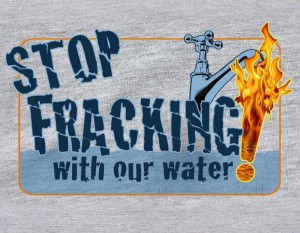Contributing Writer for Wake Up World
Fracking has been known to be cause environmental and health damage. Doctors have begun warning the United States government along with gas and oil producers of the dangers revolving around fracking, with many on a quest to end fracking completely.
Fracking, or the act of pumping water and chemicals underground in order to facilitate the flow of oil or gas, is resulting in contaminated and polluted groundwater. Environmentalists and activists alike have long been trying to force oil and gas companies to disclose which chemicals are being used for their drilling and fracking process, but efforts have been less than successful. A 2011 congressional report states that many of the chemicals being used in the fracking process do pose a health risk, and so individuals should know exactly what chemicals are being used. Another report released by the Food & Water Watch states that the process of hydraulic fracturing, or fracking, is to become a global and environmental health threat.
Wenonah Hauter, Executive Director of Food & Water Watch, states:
“Fracking is a dangerous American export that should be viewed critically by countries just starting to engage in the practice. Modern drilling and fracking have caused widespread environmental and public health problems, as well as posed serious, long-term risks to vital water resources…while the oil and gas industry is profiting off of this technology, it has been a disaster for Americans exposed to its pollution.”
Although the full list of ingredients used in fracking is not known, we do have a partial list. Here are some of the known ingredients and chemicals used in the fracking process:
- Water – Making up approximately 99 percent of fracking fluid.
- Methanol – A chemical used in antifreeze, pain solvent, and vehicle fluid, methanol can cause headaches, fatigue, eye irritation and can be fatal at high doses. Swallowing methanol could cause eye damage or even death.
- Crystalline silica – A known carcinogen, crystalline silica is harmful when inhaled over a long period of time, leading to silicosis or cancer. It can be found in concrete, brick mortar, and construction sands.
- Naphthalene – Naphthalene is found in mothballs, can cause respiratory tract irritation, nausea, vomiting, fever, death, and is carcinogenic.
- Diesel – Another carcinogen, diesel is known to cause redness, burning, severe skin damage, and cancer.
- Formaldehyde – Ingesting one ounce of formaldehyde can cause death, while exposure over time can cause lung damage, nervous system disorders, and reproductive problems in women. The chemical is also a carcinogen.
- Lead – Previously found in 500 popular lipsticks, and known to contaminate the water supply, lead is a carcinogenic heavy metal found in paint and building construction materials. It leads to nervous system damage, fertility problems, and brain disorders.
- Sulfuric acid – Found in lead-acid batteries for cars, sulfuric acid is corrosive to all body tissues. At a lethal dose of between 1 teaspoonful and 1.5 ounce, it is classified as a probable carcinogen.
Many more chemicals can be found in the fracking process such as fuel oil #2, kerosene, hydrofluoric acid, and boric acid. With mainstream doctors, the EPA, and countless activists around the nation protesting the health-threatening nature of hydraulic fracking, isn’t it time that an independent investigation was conducted?
About the Author
Anthony Gucciardi is an accomplished investigative journalist with a passion for natural health. Anthony’s articles have been featured on top alternative news websites such as Infowars, NaturalNews, Rense, and many others. Anthony is the co-founder of Natural Society, a website dedicated to sharing life-saving natural health techniques. Stay in touch with Natural Society via the following sites Facebook – Twitter – Web

If you've ever found value in our articles, we'd greatly appreciate your support by purchasing Mindful Meditation Techniques for Kids - A Practical Guide for Adults to Empower Kids with the Gift of Inner Peace and Resilience for Life.
In the spirit of mindfulness, we encourage you to choose the paperback version. Delve into its pages away from screen glare and notifications, allowing yourself to fully immerse in the transformative practices within. The physical book enriches the learning process and serves as a tangible commitment to mindfulness, easily shared among family and friends.
Over the past few years, Wake Up World has faced significant online censorship, impacting our financial ability to stay online. Instead of soliciting donations, we're exploring win-win solutions with our readers to remain financially viable. Moving into book publishing, we hope to secure ongoing funds to continue our mission. With over 8,500 articles published in the past 13 years, we are committed to keeping our content free and accessible to everyone, without resorting to a paywall.







